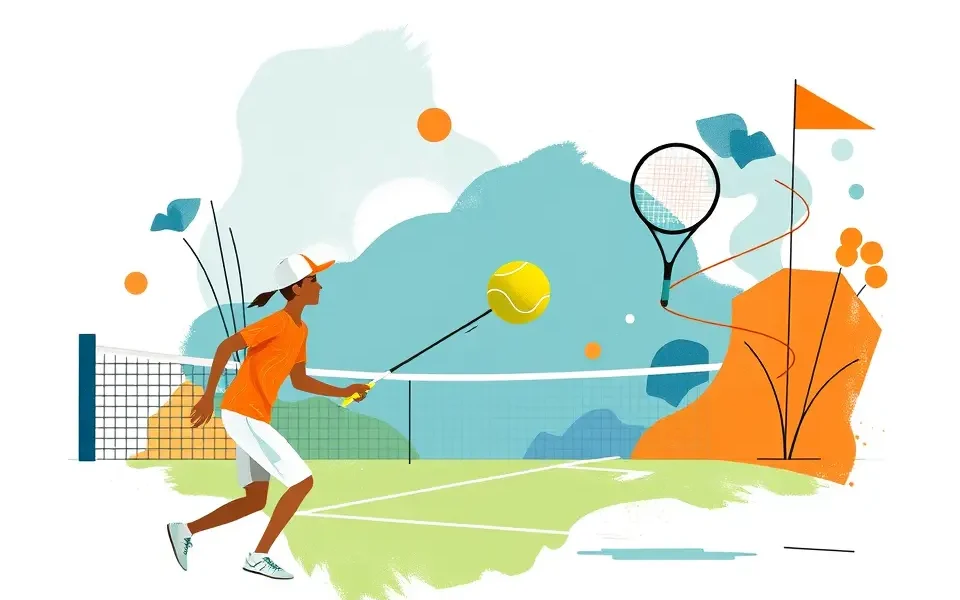In the world of professional tennis, the names Roger Federer, Rafael Nadal, and Novak Djokovic are synonymous with greatness. Their combined dominance has redefined the sport, with an astounding 66 Grand Slam titles among them. However, their success isn’t solely attributed to raw talent and relentless training; a strategic approach to career management, pioneered by Federer, played a crucial role. Jim Courier, a former world No. 1 and four-time Grand Slam champion, recently shed light on this “hack” that revolutionized tennis longevity, influencing Nadal and Djokovic to follow suit.
The Courier Revelation: Federer’s Longevity Secret
In a recent interview, Courier explained how Federer identified a crucial element that reshaped modern tennis: smart scheduling. Unlike previous generations of players who relentlessly pursued every tournament, Federer realized the importance of prioritizing rest and recovery to prolong his career.
Courier pointed out that Federer understood he didn’t have to play every tournament he was expected to. He would strategically skip events to preserve his body and mind, setting a new standard for career longevity. This approach, Courier believes, was subsequently adopted by Nadal and Djokovic, enabling them to maintain elite levels well into their late 30s.
The Grind of Previous Eras: A Contrast
Courier contrasted Federer’s approach with that of his own generation, including legends like Pete Sampras. Courier and Sampras, who retired at 29 and 31, respectively, often played packed schedules, leading to mental fatigue and burnout. Courier lamented that in his era, players felt compelled to meet the demands of organizers, resulting in a relentless grind with little room for rest. He noted that Sampras, who retired at 31 with 14 Grand Slam titles, might have matched or surpassed Federer’s major wins had he adopted a similar scheduling strategy.
Federer’s Blueprint: Deliberate Breaks and Strategic Absences
Federer’s “hack” involved taking deliberate breaks, sometimes a month off mid-season, to recharge and decompress. This allowed him to compete at a high level for an extended period, ultimately retiring in 2022 after an impressive 24 years on tour. Courier emphasized that this was a departure from the norm, as players like Ivan Lendl, John McEnroe, and Jimmy Connors “all just kept going until we burned out.”
Nadal and Djokovic: Adapting the Strategy
Nadal and Djokovic, witnessing Federer’s success, recognized the value of strategic scheduling. Nadal, who retired in 2024 with 22 Grand Slam titles, and Djokovic, who is still actively competing at 37 and chasing a record 25th major, both benefited from Federer’s blueprint. They managed their careers in a way that previous generations didn’t, prioritizing longevity and peak performance over constant play.
The Impact on the “Big Three’s” Dominance
Courier believes that this longevity hack is a key reason why Federer, Nadal, and Djokovic have become the most decorated players in tennis history. By extending their careers, they were able to accumulate more titles and solidify their status as legends of the game.
Beyond Scheduling: Other Factors Contributing to Longevity
While strategic scheduling played a significant role, other factors also contributed to the “Big Three’s” longevity:
- Advances in sports science and training: Modern tennis players have access to advanced training techniques, nutritional guidance, and injury prevention strategies that were not available to previous generations.
- Improved recovery methods: Players now prioritize recovery through methods like ice baths, massage therapy, and specialized sleep routines.
- Evolving playing styles: While power and athleticism remain important, the “Big Three” also emphasized efficiency, shot selection, and mental fortitude, allowing them to conserve energy and minimize wear and tear on their bodies.
The Lasting Legacy of Federer’s “Hack”
Federer’s “hack” has had a lasting impact on the world of tennis, influencing how players approach their careers and prioritize their well-being. By demonstrating the importance of strategic scheduling, he paved the way for future generations to extend their careers and achieve sustained success. As tennis continues to evolve, the lessons learned from Federer, Nadal, and Djokovic will undoubtedly shape the sport for years to come.
Analyzing the Individual Playing Styles and Adaptations
Each member of the “Big Three” brought a unique style to the court, constantly evolving and adapting their games to stay ahead of the competition.
Roger Federer: The Adaptable Maestro
Federer was renowned for his elegant, all-court game, characterized by effortless movement, fluid strokes, and exceptional versatility. His ability to seamlessly transition from offense to defense, coupled with his masterful net play, made him a formidable opponent on all surfaces.
- Adaptability: Federer demonstrated an immense capacity to adjust his playing style based on the opponent, court surface, and match situation. He would strategically vary his serve placement, shot selection, and net approaches to disrupt his opponent’s rhythm and exploit weaknesses. A prime example is the “sabre” (Sneak Attack By Roger), a half-volley approach shot on the opponent’s second serve, designed to keep his adversary guessing.
- Perfect Footwork: Federer’s footwork was exceptional, allowing him to hit the ball early and from various positions on the court. This made it incredibly challenging for opponents to anticipate his next move.
- Forehand Prowess: During his prime, Federer’s forehand was arguably the greatest in the history of the sport. He could generate tremendous spin while also flattening it out, giving him unmatched versatility.
Rafael Nadal: The Relentless Warrior
Nadal, the “King of Clay,” was known for his relentless intensity, unwavering determination, and unparalleled physicality. His signature topspin-heavy forehand, combined with his exceptional court coverage and defensive skills, made him a dominant force on clay and a formidable opponent on all surfaces.
- Aggressive Baseliner: Nadal’s game revolved around dictating play from the baseline with his powerful forehand, constantly applying pressure on his opponents.
- Targeting the Backhand: A key strategy in Nadal’s rivalry with Federer was relentlessly targeting Federer’s backhand, often mixing in a shot down the line to disrupt his opponent’s rhythm.
- Mental Fortitude: Nadal possessed exceptional mental strength, enabling him to overcome adversity and perform at his best in high-pressure situations.
Novak Djokovic: The Immovable Object
Djokovic’s game was built on exceptional baseline play, remarkable flexibility, and unwavering mental toughness. His ability to turn defense into offense with his incredible return of serve became a hallmark of his game.
- Defensive Prowess: Djokovic was renowned for his incredible court coverage and defensive skills, making him one of the most difficult players to hit through.
- Return of Serve: Djokovic’s return of serve was arguably the best in the history of the game, allowing him to neutralize his opponent’s advantage and immediately gain control of the point.
- Adaptable to All Surfaces: While Nadal dominated on clay, Federer had grass and Djokovic hardcourt as his best surfaces, according to many analysts.
The Impact on Future Generations
The “Big Three” have not only elevated the sport of tennis but have also inspired countless players around the world. Their influence can be seen in the evolving playing styles of younger players, who are increasingly incorporating elements of their games, such as aggressive baseline play, exceptional court coverage, and mental toughness. The legacy of Federer, Nadal, and Djokovic will continue to shape the sport for generations to come.








No Comment! Be the first one.